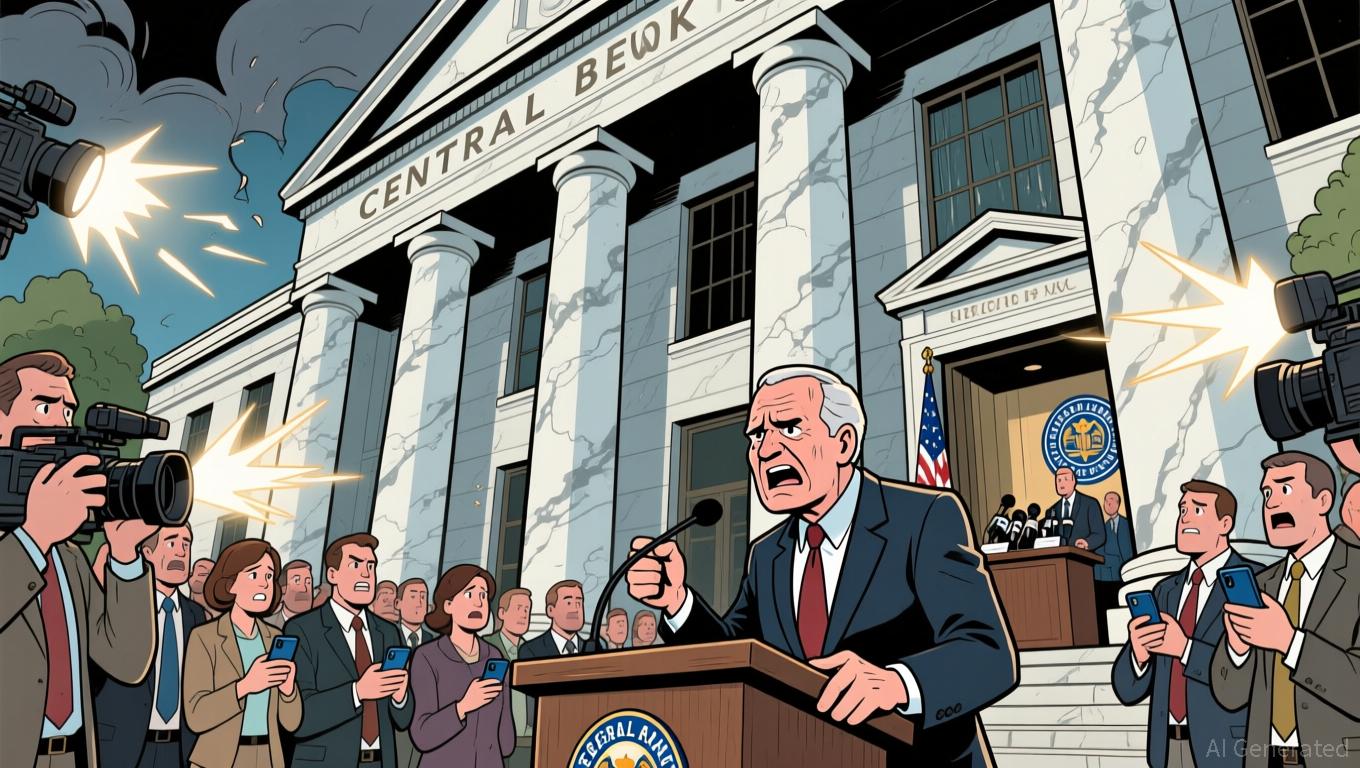CBO reduces Trump tariff deficit by $1 trillion amid legislative disputes regarding rebate proposals
- CBO revised Trump-era tariff deficit savings downward by $1 trillion to $3 trillion through 2035, citing policy shifts like China-EU-Japan tariff cuts. - Legal challenges question Trump's executive authority on tariffs, with courts ruling against overreach while Supreme Court reviews cases. - Political clashes persist over $2,000 "tariff rebate" proposals, with Republicans prioritizing debt reduction over direct payments. - Economic analysis shows mixed impacts: short-term deficit reduction but uncertain
The Congressional Budget Office has lowered its projection for deficit reduction resulting from President Donald Trump's tariffs by $1 trillion, now estimating a total of $3 trillion in savings through 2035, down from the $4 trillion it predicted in August. The nonpartisan office
The updated numbers highlight intensifying examination of the Trump administration’s trade approach, which has encountered legal opposition regarding its authority to impose tariffs without congressional approval.

The administration’s tariff policies have also received mixed reviews from economists. While the CBO notes that tariffs have helped reduce the deficit from 6.3% to 5.9% of GDP,
The debate over how to use tariff revenue is further complicated by broader budgetary concerns. With the Trump administration’s comprehensive “One Big Beautiful Bill” tax and policy package already enacted, lawmakers are now considering how to allocate future tariff proceeds.
As the CBO’s new projections influence the discussion, the administration’s success in turning tariff revenue into legislative results will depend on its ability to bridge partisan disagreements. For now, the outcome remains unclear, with both markets and lawmakers closely monitoring for signs of either compromise or continued discord.
Disclaimer: The content of this article solely reflects the author's opinion and does not represent the platform in any capacity. This article is not intended to serve as a reference for making investment decisions.
You may also like
Fed's Split Opinions and Incomplete Data Obscure Prospects for Rate Reduction
- Fed's December rate cut odds drop to 39.6% due to missing October jobs data and inflation uncertainty. - Market jitters rise as gold falls, dollar strengthens, and crypto faces pressure amid policy uncertainty. - Fed factions debate inflation control vs labor support, with CME pricing 44% chance of 25-basis-point cut. - Central bank plans to end quantitative tightening in December, but data gaps complicate policy calibration. - 2026 may see slower easing cycle as investors monitor November payrolls and F

$40K Gas Fee Turns Into $1M Gain: Jesse Token Sniping Highlights Barriers to Entry in Crypto
- An address paid $40K in gas fees to secure 7.6% of Jesse token, netting $1M profit after selling its stake. - The "scientist" actor exploited advanced tools to front-run Jesse's token sale, highlighting DeFi's competitive "sniping" dynamics. - High gas fees and technical barriers concentrate token sale opportunities among well-resourced participants, raising accessibility concerns. - Jesse token's launch, led by Base co-founder, reflects broader crypto trends where strategic timing and resources drive sp

Bitcoin's Latest Price Fluctuations and Growing Institutional Interest: Optimal Timing for Investment as Regulations Become Clearer and Economic Conditions Evolve
- Bitcoin's 2025 volatility reflects institutionalization, with $11B in Q3-Q4 2025 ETF inflows and corporate buyers like MicroStrategy accumulating BTC. - Regulatory clarity via the GENIUS Act and Tether's Latin American expansion accelerated institutional adoption, despite U.S. state-level restrictions creating short-term uncertainty. - Macroeconomic tailwinds including Fed rate cuts and $96T global M2 money supply supported Bitcoin's $200,000 price target, lowering capital costs for long-term holdings. -
Solana’s Latest Price Rally: Could This Signal the Beginning of Another Bull Market?
- Solana's 2025 upgrades (Firedancer, Alpenglow, ZK Compression v2) enhance scalability to 1M TPS and reduce costs by 5,200x, positioning it for institutional adoption. - Institutional partnerships with Western Union (USDPT), Google Cloud, and ETFs (BSOL/GSOL) drive $111M inflows and validate Solana as a financial infrastructure backbone. - While SOL trades at $141 under bearish pressure, technical upgrades and real-world use cases suggest long-term growth potential beyond speculative trading cycles.